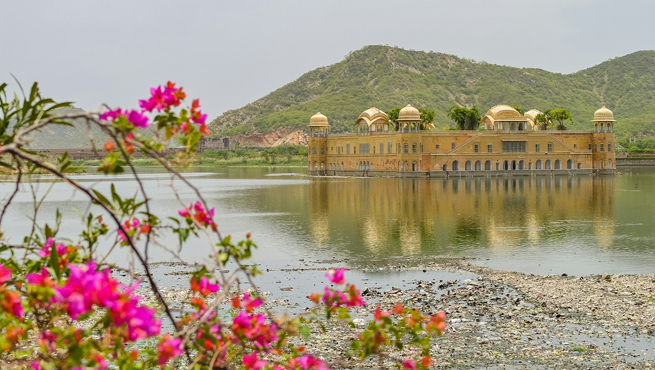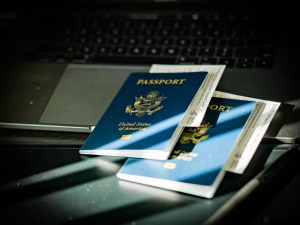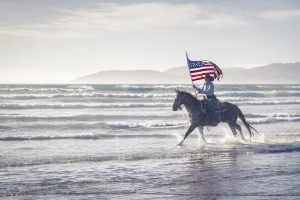The India eVisa for US citizens program offers three convenient options – 30-day, 1-year, and 5-year visas, with fees ranging from $10-$80 depending on your duration and season of travel. The digital visa system eliminates embassy visits and typically processes applications within 3-4 business days.
This guide breaks down the requirements and procedures to help you secure the right visa for your Indian journey.
- Types of India eVisa for US Citizens
- India eVisa Fees for US Citizens
- India eVisa Eligibility Criteria for US Citizens
- India eVisa Document Requirements for US Citizens
- How to get India eVisa for US Citizens
- Visa Processing Time & Next Steps
- India Rejection Reasons for US Citizens
- US Citizens’ Top Reasons to Visit India
- FAQs
Types of India eVisa for US Citizens
The India tourist eVisa for US citizens comes in three categories, offering flexibility for both short-term tourism and extended exploration in India.
|
Type |
Validity |
Stay Duration |
Entry |
Processing |
|---|---|---|---|---|
|
e-Tourist Visa (30 days) |
30 days from arrival |
30 days |
Double |
3-4 business days |
|
e-Tourist Visa (1 year) |
1 year from issue date |
Up to 180 days per visit |
Multiple |
3-4 business days |
|
e-Tourist Visa (5 years) |
5 years from issue date |
Up to 180 days per visit |
Multiple |
3-4 business days |
India eVisa Fees for US Citizens
The Indian government offers a tiered fee structure for tourist eVisas, varying by season and duration of stay.
|
Type |
Fee |
|---|---|
|
Tourist eVisa (30 days, off-peak)* |
$10 |
|
Tourist eVisa (30 days, peak)** |
$25 |
|
Tourist eVisa (1 year) |
$40 |
|
Tourist eVisa (5 years) |
$80 |
- Additional charges: 2.5% bank transaction fee applies
- Other key info: Expedited processing is not available and all fees are non-refundable
India eVisa Eligibility Criteria for US Citizens
US citizens must meet specific eligibility criteria to qualify for an Indian tourist eVisa, covering personal, financial, and travel requirements.
- Valid US passport with at least 6 months validity beyond the intended arrival date and a minimum of two blank pages for stamping.
- No Pakistani origin or descent. US citizens of Pakistani origin or those born in Pakistan are not eligible for eVisa and must apply for a regular visa.
- Sufficient financial means to support stay in India. While no specific amount is officially stated, it’s recommended to have at least $50 per day of your stay or a minimum of $500 for short trips.
- Return or onward travel tickets.
- Valid email address for communications. This is verified during the online application process, where you’ll receive a confirmation email that you must respond to in order to proceed with your application.
- Intention to visit India for eligible purposes such as tourism, short-term business, or medical treatment.
- No intention to stay in India for more than 180 days in a calendar year.
- Agreement to register with the Foreigners Regional Registration Office (FRRO) if planning to stay more than 180 days.
- Not holding a diplomatic or official passport, as eVisa is not available for these passport types.
India eVisa Document Requirements for US Citizens
Prepare your application by gathering these essential documents – from passport requirements and photo specifications to supporting travel documentation.
- A valid passport that has at least six months of validity remaining from the date of arrival in India and contains at least two blank pages for immigration stamping.
- A recent passport-sized color photograph that measures 2 inches x 2 inches (51mm x 51mm), with a light background, showing a full face view, and submitted in JPEG format with a file size between 10KB and 1MB.
- A completed online application form available on the official Indian government eVisa portal, which must be submitted at least four days before the intended travel date.
- A valid email address to receive the eVisa approval and any correspondence regarding the application process.
- Proof of onward or return travel, such as a confirmed flight itinerary, which may not be required at the time of application but could be requested by immigration authorities upon arrival.
- Accommodation details in India, including the name and address of the hotel or place where you will be staying during your visit.
- Payment for the eVisa application fee using a credit or debit card during the online submission process, with fees varying based on visa type and duration.
How to get India eVisa for US Citizens
India eVisa application for a US citizen can be completed in a few simple steps through the official portal:
- Visit the official website
- Click on the “Apply Here” button for eVisa application.
- Select “United States” as your nationality and choose “e-Tourist Visa” as your visa type.
- Fill in all the other details and necessary fields and shown below.
- Fill in your personal details including passport information, ensuring passport has minimum 6 months validity and two blank pages.
- Upload a passport-style digital photo (square, front-facing, white background).
- Scan and upload your passport’s biographical page (PDF format).
- Enter your travel details, including intended arrival date and port of entry (must be one of 31 designated airports or 5 seaports).
- Review all information carefully for accuracy.
- Pay the visa fee using credit/debit card or PayPal through SBIePay or Axis Bank payment gateway.
- Receive an application ID and confirmation email immediately after submission.
- Wait for visa processing (up to 72 hours) – status updates will be sent to your email.
- Download and print your Electronic Travel Authorization (ETA) when approved.
- Present the printed ETA and your passport at immigration upon arrival in India.
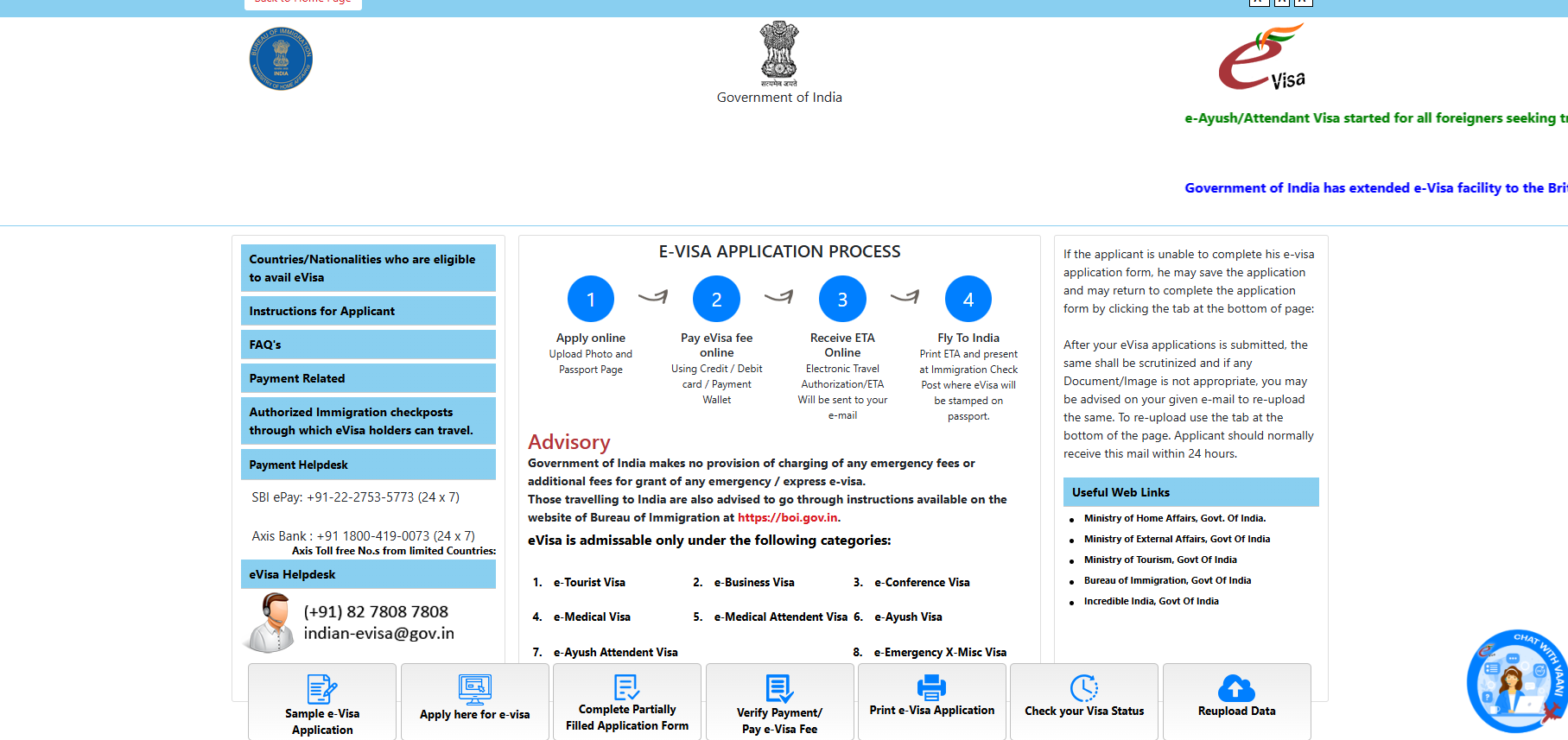
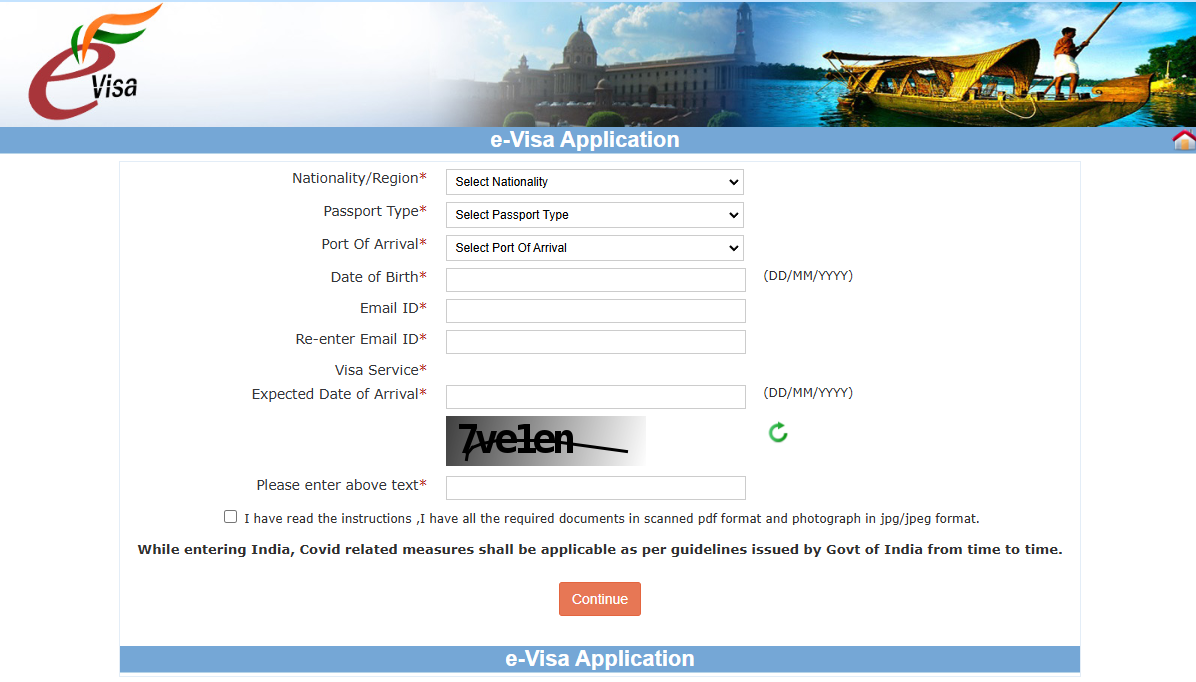
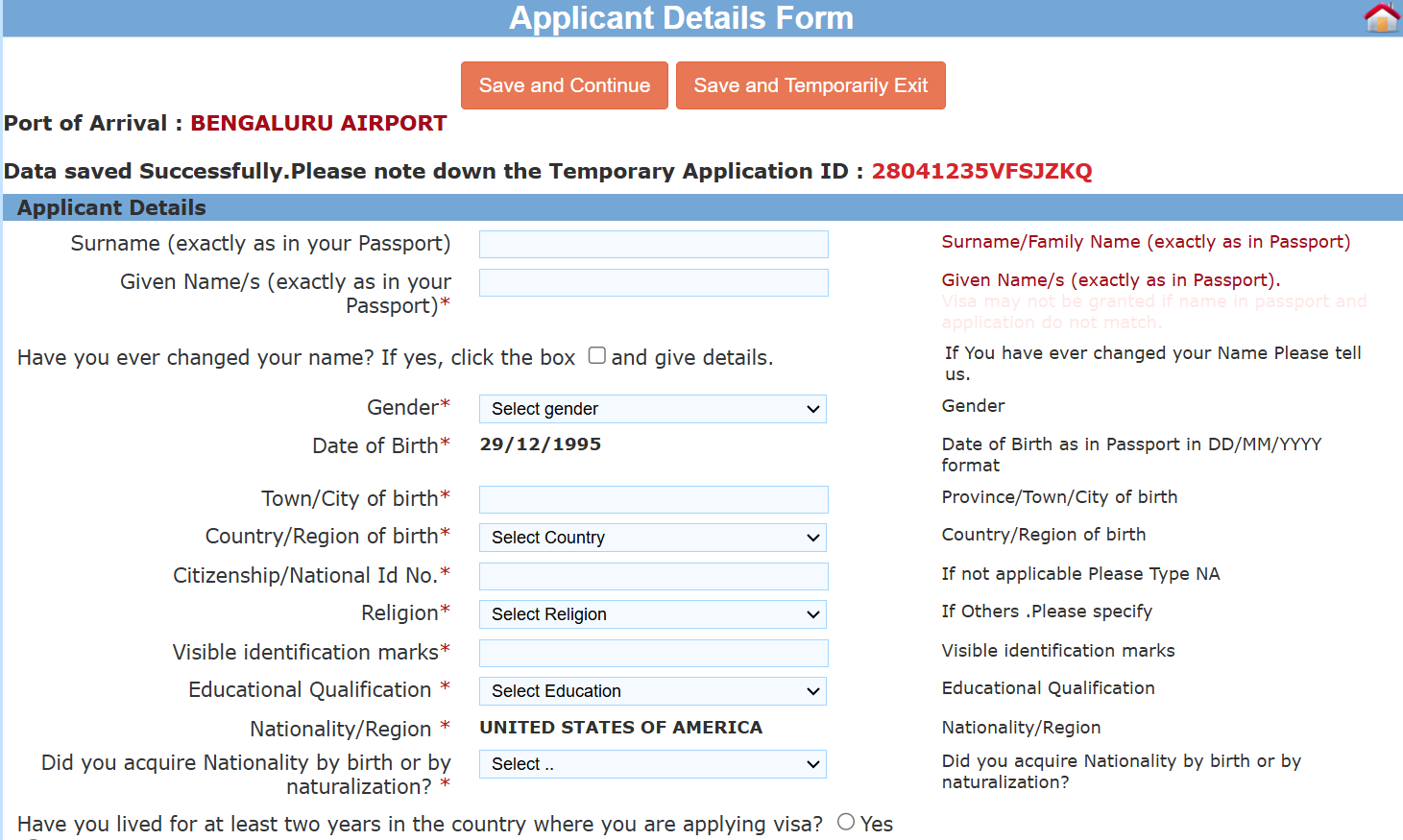
Note: Applications can be made 120 days in advance for 1-year/5-year visas, or 30 days in advance for 30-day tourist visas.
Visa Processing Time & Next Steps
The standard processing time for an Indian eVisa for US citizens is typically 3-4 business days. However, it’s important to note that processing times can vary, especially during peak travel seasons or holidays. To ensure a smooth process, it’s advisable to apply at least 7 days before your planned travel date.
Once you’ve submitted your eVisa application:
- You will receive an email confirming the submission of your application.
- Track your application status online using the application ID provided during submission.
- Upon approval, you’ll receive an Electronic Travel Authorization (ETA) via email.
- Print the ETA and carry it with you when travelling to India.
- Present the printed ETA along with your passport at the Immigration Check Post upon arrival in India, where the eVisa will be stamped on your passport.
It’s crucial to review all the information on your ETA carefully. If you notice any discrepancies, contact the issuing authority immediately for rectification.
Remember, the eVisa is valid from the date of issue, not from your planned travel date. Ensure that you travel within the validity period specified on your eVisa.
India Rejection Reasons for US Citizens
Your India eVisa application can be rejected for any of the below reasons:
- Incomplete information provided or Insufficient documentation proving the purpose of visit, such as missing hotel bookings, detailed itinerary, or return flight tickets.
- Previous visa violations or overstays in India or other countries, which raise concerns about compliance.
- Inadequate proof of financial means to support the intended duration of stay in India.
- Security concerns or incomplete background information, particularly for applicants with military/government backgrounds.
- Passport validity less than 6 months beyond the intended date of arrival in India.
US Citizens’ Top Reasons to Visit India
People from the US visit India for several reasons. India being one of the most diverse countries in every term, offers you a unique blend of everything.
Climate & Season: The contrast between India’s climate and the US creates unique travel opportunities year-round. While the US East Coast battles winter storms, North India enjoys pleasant 60-70°F (15-20°C) days from November to February. When summer scorches the US Midwest, India’s hill stations offer cool retreats at 50-68°F (10-20°C).
The most popular tourist season aligns with the US winter (October to March), featuring comfortable temperatures of 59-86°F (15-30°C), clear skies, and vibrant festivals like Diwali. Monsoon season (July-September) offers a dramatic contrast to US summers, transforming landscapes with lush greenery.
Flights & Ease of Entry: Major carriers like Air India, United Airlines, and American Airlines operate direct flights from US hubs to Indian metros. Direct flights from New York (JFK/EWR) to Delhi take approximately 14 hours, while flights from San Francisco to Mumbai clock around 17 hours.
One-way fares typically range from $600-$900, with round-trip tickets averaging $800-$1,400 depending on the season. Connecting flights through Dubai, Doha, or Singapore often offer more economical options starting at $700 round-trip.
Currency Exchange & Affordability: India is known for its affordability. Tourists can experience luxury at a fraction of the cost, with accommodations ranging from $30–50 per night for mid-range hotels to premium experiences at competitive rates. Currency exchange facilities and apps simplify financial transactions, making it convenient for visitors.
Culture & Religious Ties: India’s cultural scene blends ancient traditions with a modern lifestyle. Showcasing over 22 official languages and 1,600 dialects, the country boasts the world’s largest film industry—Bollywood—and eight classical dance forms representing its artistic heritage.
Many American visitors connect with India’s rich spiritual heritage through its iconic temples, churches, mosques, and sacred sites, discovering both ancestral traditions and new perspectives.
Attractions & Tourism Trends: India’s attractions range from the iconic Taj Mahal and the ancient ghats of Varanasi to the serene backwaters of Kerala and UNESCO heritage sites like Khajuraho Temples.
Adventure tourism is gaining popularity, with options like white-water rafting in Rishikesh, tiger safaris in national parks, and trekking in the Himalayas. Visitors can immerse themselves in yoga retreats, cooking classes, and traditional art workshops.
Language Support: India is tourist-friendly, with English widely spoken across major cities and tourist hubs. Signage in English and local guides ensure smooth communication for international travelers.
Local Travel Guides & Apps: Tech-savvy travelers can rely on local travel apps and guides that offer real-time updates, navigation, and cultural insights. Apps like MakeMyTrip and Ola make travel planning and transportation simple and efficient.
USPs (Unique Selling Points): India offers luxurious hospitality with heritage hotels, wellness retreats, and unique experiences. From the vibrant festivals to the flavors of its cuisine, India delivers unforgettable memories for US tourists seeking diverse and enriching experiences.


FAQs
What is India eVisa and who can apply?
The India eVisa is an electronic authorization that allows US citizens to enter India for short-term visits including tourism, business, and medical purposes. US passport holders can apply online through the official government portal, simplifying the visa process by eliminating the need to visit an Indian embassy or consulate in person.
What documents are needed for an India eVisa?
For a successful India eVisa application, US citizens must provide a passport valid for at least 6 months with two blank pages, a recent passport-sized photograph meeting specific requirements (2×2 inches, white background), and a valid email address.
How long is the India eVisa valid?
The validity of an India eVisa varies based on the type selected. The 30-day tourist eVisa is valid for 30 days from your first entry into India with double entry privileges. The 1-year and 5-year tourist eVisas allow multiple entries with each stay limited to 180 days, offering greater flexibility for frequent travelers.
How much does an India eVisa cost?
The India eVisa fee structure for US citizens includes seasonal variations and validity options. The 30-day tourist eVisa costs $25 during peak season (July to March) and $10 during off-peak season (April to June). The 1-year tourist eVisa is priced at $40, while the 5-year option costs $80. Additional bank transaction charges of 2.5% apply to all payments.
Can I apply for an India eVisa on arrival?
No, US citizens cannot apply for an India eVisa upon arrival. The application must be completed and approved before traveling to India through the official online portal. It’s recommended to apply at least 4 days before your intended travel date to allow sufficient processing time and avoid any last-minute complications.
Is the India eVisa single or multiple-entry?
The entry type depends on your chosen visa duration. The 30-day tourist eVisa provides double entry privileges, while both 1-year and 5-year tourist eVisas offer multiple entry benefits. Each stay, regardless of visa validity, is limited to 180 days per visit, and travelers must ensure they don’t exceed this duration to avoid immigration issues.
How long does eVisa processing take?
Standard processing time for an India eVisa is typically 3-4 business days from the date of application submission. However, processing times may vary during peak travel seasons or holidays. For a smooth process, it’s advisable to apply at least 7 days before your planned travel date to accommodate any potential delays or additional document requests.
What happens if my eVisa application is rejected?
If your eVisa application is rejected, you’ll receive an email notification explaining the reason for rejection. Common causes include incomplete information, incorrect photograph specifications, or discrepancies in passport details. You can submit a new application immediately after rejection, ensuring all previous errors are corrected, or consider applying for a regular visa through an Indian consulate.
Do minors need their own India eVisa?
Yes, every traveler, including minors and infants, must have their own individual eVisa to enter India. Parents or legal guardians must complete the application on behalf of minors, providing the child’s passport details and photographs meeting the specified requirements. The application process and fees remain the same regardless of the applicant’s age.
Is a printed copy of the eVisa required?
Yes, carrying a printed copy of your approved visa is mandatory when traveling to India. Immigration officials will need to see the physical copy along with your passport upon arrival. It’s recommended to carry multiple copies of your eVisa and store a digital version as backup in case of loss or damage to the printed copy.





